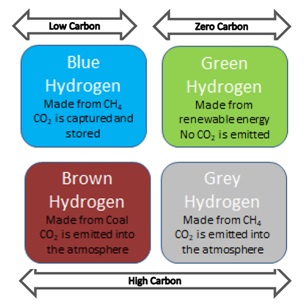

Introduction
Hydrogen is all set to play a significant role in decarbonizing energy system. Green Hydrogen has no carbon footprint though several challenges remain in its usage at wider level. National Hydrogen Mission was announced by the centre govt in this year's Budget to tackle all these challenges and Rs. 25 crores is allotted to MNRE for R&D on hydrogen.
India had organized a two-day summit on green hydrogen involving BRICS nations on their initiatives around the green fuel
But there are several challenges in unlocking the untapped potential of the resource
In this episode of The Big Picture based on Road to Hydrogen Economy, we will discuss and analyse diverse aspects of this issue
Edited Excerpts from the debate
Major points highlighted during the meeting
- Hydrogen production:
- Hydrogen has been used in industries for long time.
- The annual capacity of production is around 6 Million Metric tons of Hydrogen
- But this hydrogen is produced using steam reforming process which use methane/natural gas or coal gasification process, which is not cheap
- Both these processes produce carbon dioxide which is a green house gas
- The hydrogen produced is called grey Hydrogen
- Green Hydrogen
- It is produced using renewable energy like solar or wind so there is no carbon dioxide emission
- In this process the hydrogen is produced by electrolysis of water where water molecule splits into hydrogen and oxygen
- India is focusing on green hydrogen which can be deployed in transportation, power generation and industry.
- Why shift to green hydrogen?
- Since the solar tariffs are lowest in the country eg. Rs. 2 per unit it would be slight economical to electrolyze water and produce hydrogen from that process
- There is limitation to electricity penetration (around 18%) in different sectors of the economy and hence we cannot decarbonize each sector using electricity alone
- The net zero emission target cannot be achieved using electricity alone hence it calls to look into other avenues of green energy.
- Thus refineries, fertilizer, steel, transportation etc. are in dire need of decarbonization which can be fulfilled by green hydrogen
- Govt’s initiative:
- Ministry of New and Renewable energy has released a draft on ‘National Hydrogen Mission’ which is being circulated for comments and discussions to cater the production, demand –supply of hydrogen.
- Draft National Hydrogen Mission will ensure supply side of hydrogen by establishing a secretariat to look after policy and incentives for hydrogen production, which will also project the demand-supply of hydrogen and financial requirements
- Draft National Hydrogen Mission will also lead to inter ministerial consultation.
- Hydrogen Purchase Obligation has been floated by the Ministry to compel fertilizers/ refineries to adopt hydrogen in their processes
- Industries’ initiative
- NTPC has planned to plant an infrastructure in Ladakh region to operationalize hydrogen based micro grids
- IOCL has announced bus transport between Jaipur-Delhi using hydrogen fuel cell buses
- Steel Industry is working on using Hydrogen in steel production as reducing agent to replace coke based processes
- Optimize Energy Mix with hydrogen penetration:
- Proper fuel mix is required to be devised on national level to determine import dependency.
- We import 8% of hydrogen requirement of our country from abroad
- Currently the introducing hydrogen in refinery sector is most cost efficient and likewise its costly for fertilizer sector, among the sectors being targeted
- Transportation sector will require change in assembly and other engineering tweaks which can be taken up at later stage
- Challenges
- Handling of hydrogen
- Storage of hydrogen
- Safety of equipment in which hydrogen in deployed
- Cost of producing green hydrogen is $8/kg and brown hydrogen is $2/kg
- HCNG: only 5% of hydrogen can be mixed and transported in pipelines
- There is no electrolyzer in the country as of now
- Global initiatives
- Japan: importing hydrogen from Australia (grey hydrogen) to kick start hydrogen economy. Building ports and ships to handle the logistics.
- Way forward
- Incentivize hydrogen production on the lines of solar sector
- Attract cheapest finance
Value Addition
- Brown hydrogen is created through coal gasification.
- The process for producing grey hydrogen from natural gas throws off carbon waste.
- Blue hydrogen uses carbon capture and storage for the greenhouse gases produced in the creation of grey hydrogen.

More Articles

